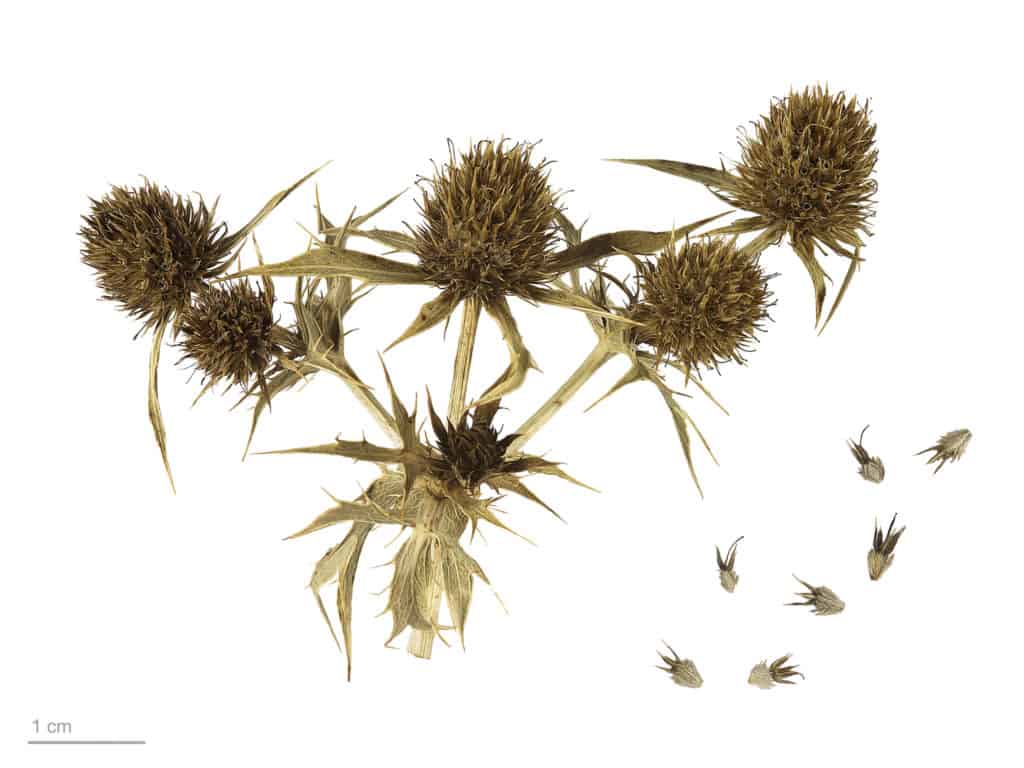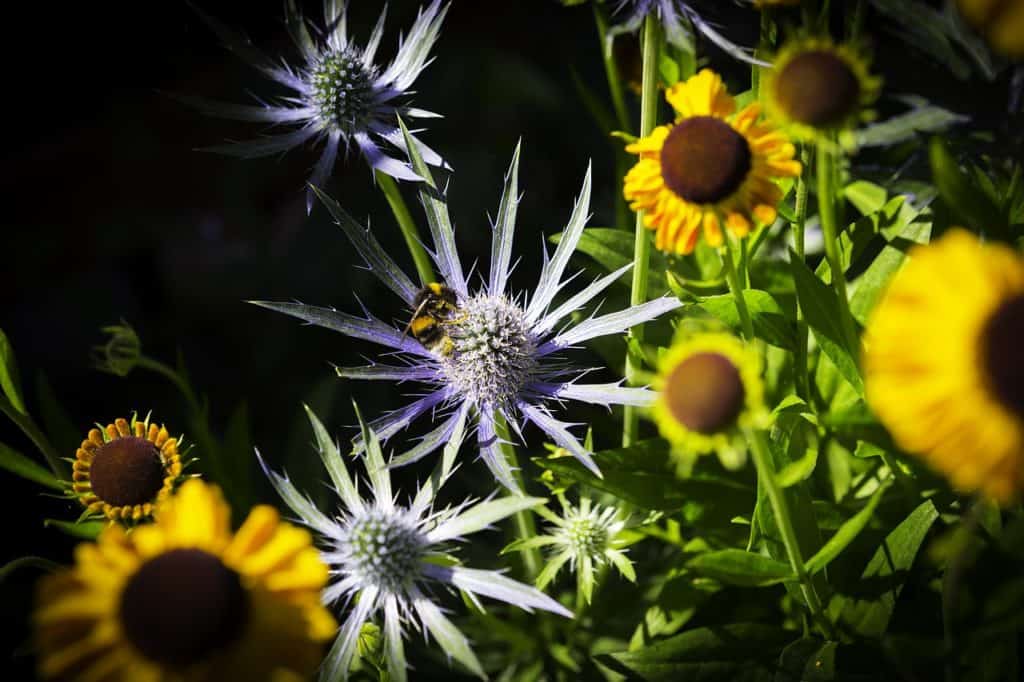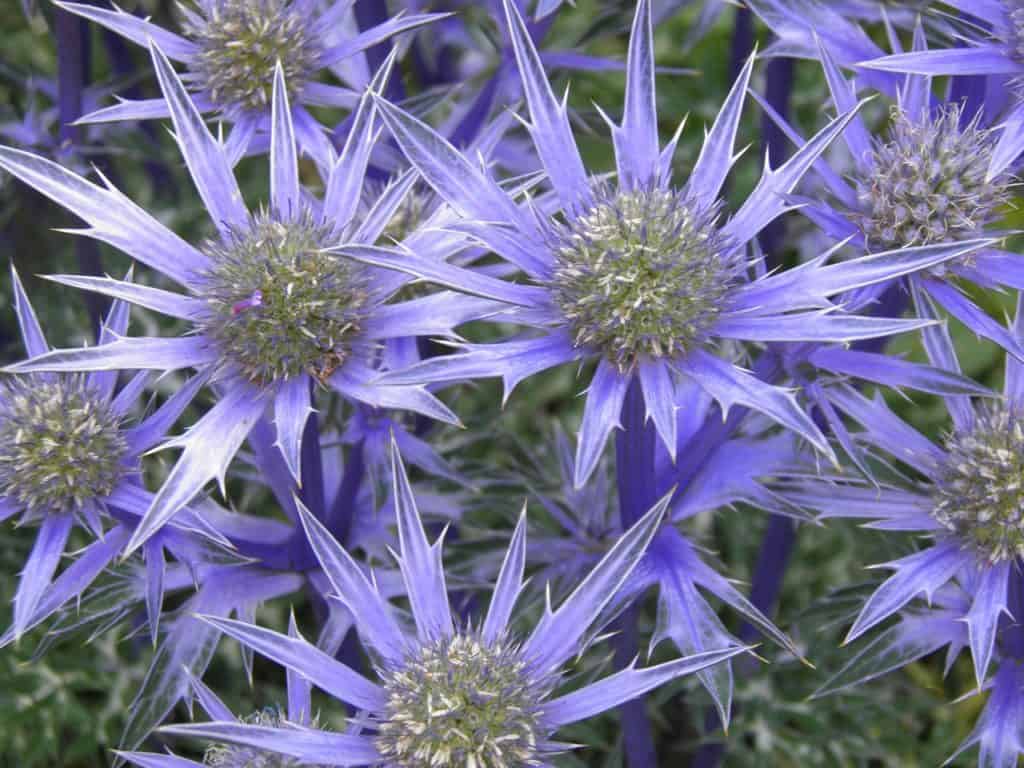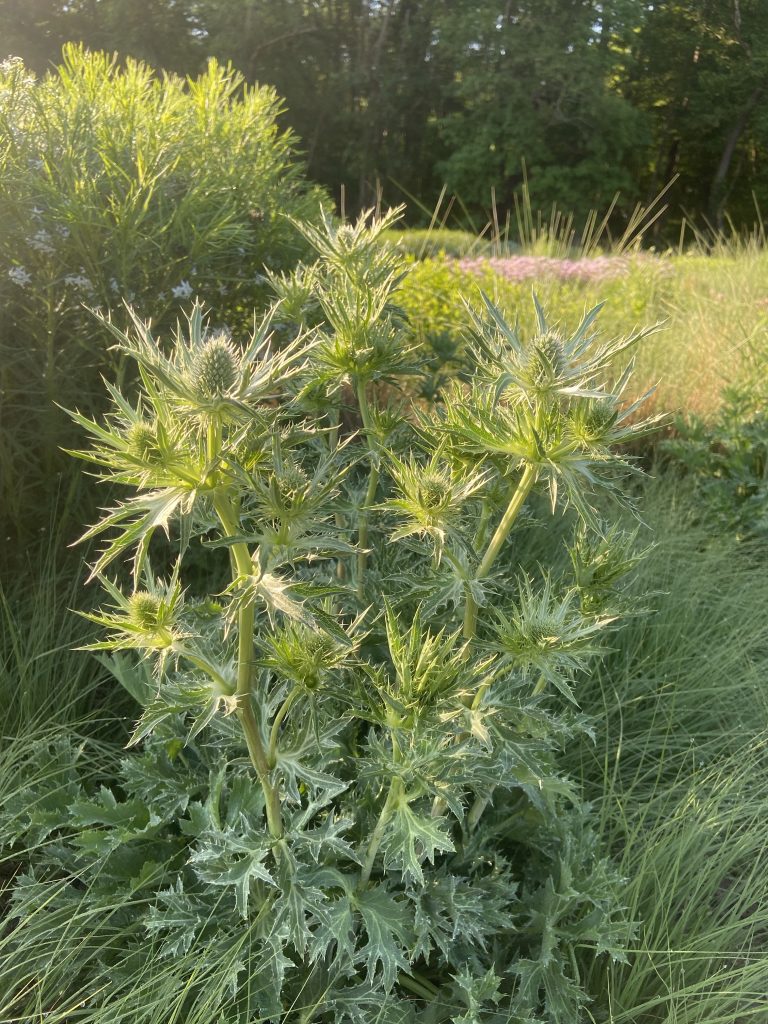Blue Sea Holly – How to Sow, Grow and Enjoy 5 of the Best Eryngium for Full-Sun Gardens.
Blue Sea Holly is a striking, architectural, often silverized annual or short-lived perennial thistle you will want to grow from seed. Often seed in designer gardens, blue sea holly brings a bold dramatic effect to any garden.
Best started from seed sown in Fall, Eryngium, often referred to as blue sea holly is a genus with over 200 hundred species with wide distribution globally, a large number of which are found native in Central America.
5 of the best Eryngium to grow from seed favor dry, free-draining, full-sun locations. Once germinated the plant prefers to grow undisturbed and is best sown from seed sown directly where they are to flower.
Pollinators:
Bees are attracted to the nectar of sea holly and despite the thistle appearance, butterflies and pollinators are regular visitors to this rosette-forming, spiny perennial umbel. Be warned the pollinators can navigate the spines, pets should avoid touching the spines and gardeners should wear thick gloves when clean-up in the spring necessary.
-
Sea Holly from Seed -
Pollinator Perennials -
Blue Sea Holly Seeds
How I Grow Eryngium:
I have had the best results when sowing Eryngium direct in Fall or simply allowing the parent plant to set seed and leaving the seeds to naturally scarify and subsequently germinate.
ERYNGIUM SOWING TIPS:
Note: Two months of cold stratification or direct sowing or winter dormancy is required!
SOWING DIRECT TIPS:
Direct sow seeds in fall and allow seeds to naturally cold stratify, this way they will germinate in Spring as temperatures improve. Leave undisturbed where they are to flower.
COMMERCIAL SECRETS TO STRATIFICATION:
Place Eryngium SEEDS in a zipper bag or cover pots/trays with black plastic after watering and seal with a rubber band then cold stratify in the fridge for 60 days.
Keep soil moist, not wet. At the end of the cold stratification, remove black plastic from pots and place trays in a warm, sunny location.
SOWING SEEDS INDOORS:
When starting seeds indoors, sow finely and gently press seeds to make contact with soil as light is required for germination.
Start in trays or small pots on a window sill or glasshouse several weeks before the last frost in your area.
HARDENING OFF:
Seeds started indoors will need acclimatizing to outdoor tempertures, this should be done gradulay by placing young plants in a shady location outdoors during the warmer part of the day, slowly increase the time to harden plants to spring tempertures.
Planting out:
Re-locating self-sown seeds of blue sea holly should be attempted as the seedling produces its true leaves a few weeks after germinating, this way you are unlikely to damage the delicate taproot.
Planting out seedlings that have been grown indoors, should be carried out with care, watering the pots or trays well prior to transferring from pots will minimize root disturbance.
Grow with:
Native Echinacea, Geum, Achillea, Rudbeckia, Oenothera, and Monarda these 6 perennials provide additional seasonal interest, and as the sea holly is long flowering, dry well and can be left standing through winter allowing a fifth season to be enjoyed by wildlife and winters brave garden visitors.
If purchasing seeds in Spring then chill for a few weeks in the vegetable draw of the refrigerator prior to sowing where they are to flower.
5 Best Eryngium:
There are several notable species and cultivars of sea holly that are worthy of a place in your pollinator garden.
E. alpinum – heart shaped leaves and the bluest of flower bracts.
E. bourgatti – metallic blue bracts and flower stems.
Eryngium zabelli “Big Blue” – a cultivar resulting from a cross between species E. alpinum and E. bourgatti.
E. planum – silver blue flower stems often used as a cut flower.
E. yuccifolium – great for naturilizing may need to be kept in check and some seedlings removed as ongoing maintenance.
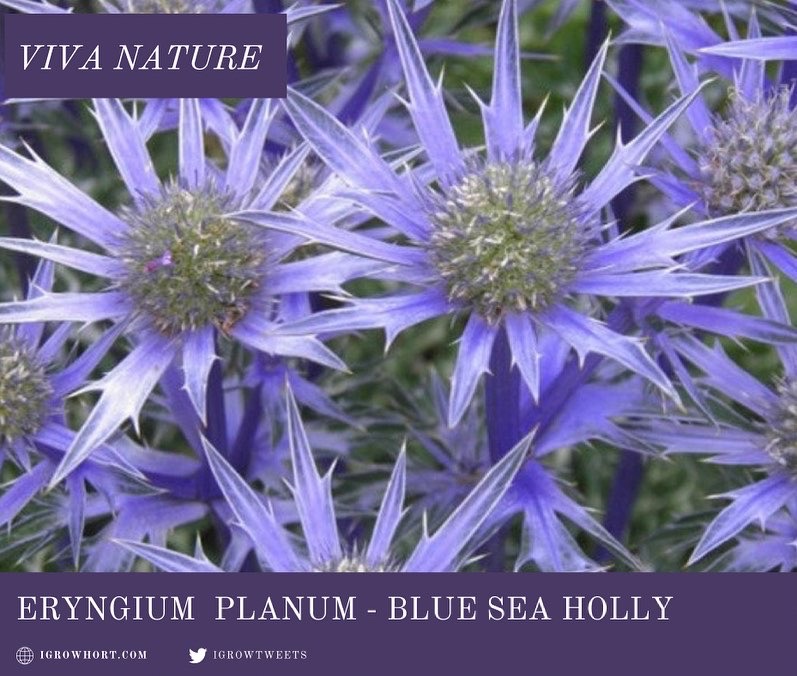
Eryngium Sea Holly Blue Thistle Seed Flower Garden Pollinator
Eryngium Sea Holly Blue Thistle Seeds – Create a Stunning Garden Display with This Pollinator-Friendly Perennial
Elevate your garden or meadow with the architectural beauty of Eryngium planum, commonly known as Sea Holly Blue Thistle. This steely blue perennial offers more than just visual appeal—it’s a magnet for late-season pollinators and an essential plant for ecological gardeners.
Plant Magick:
If Love, harmony, and marital bliss are in order then Eryngium is the plant for you, growing sea holly around the garden will help bring peace. Try burning the dried flower stems as incense or use in a love spell to help to re-ignite passion.
I find growing plants from seed incredibly rewarding, even the smallest of outdoor garden areas can be a productive workout for all the family. Try thinking of your garden as a living kitchen and grow to love fresh flowers, organic fruit, and vegetables straight from your own backyard oasis.
Stephen Pryce-Lea
How's your soil health? This simple soil test kit is easy to use and results in just a few days! Essential Test kit for gardeners

